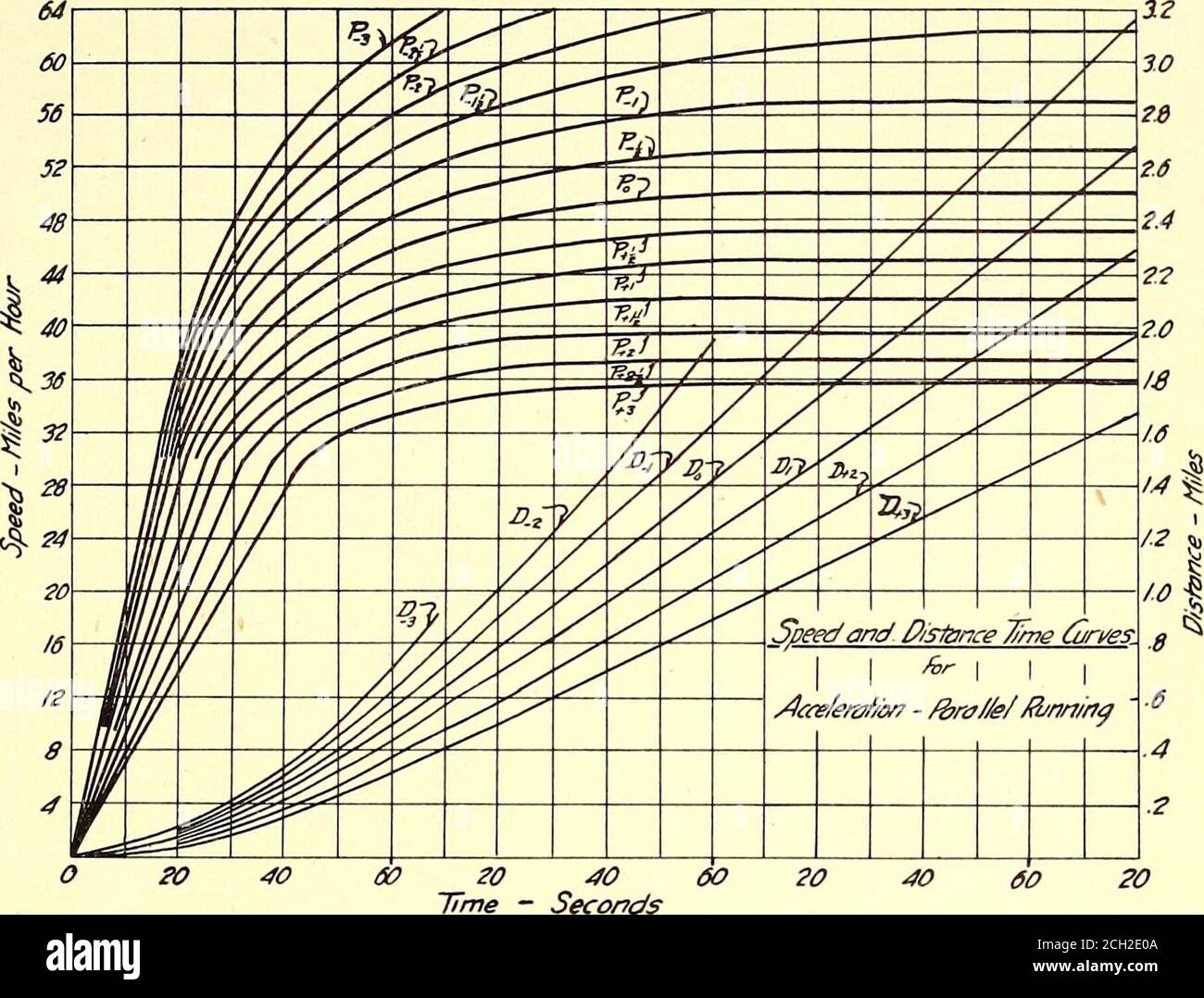. The Street railway journal . he mean accelerating efifort in pounds per motor during the speed interval V.W = the total dead weight of the train in pounds divided by the number of motors on the train.W i = the weight in pounds per motor that is equivalent in effect to the added resistance to acceleration due to the inertia of the rotating parts.This is usually equal to about 3 to 8 per cent of W.This formula can be set on the sliderule so as to read directly the value of tfor different values of A. V is best parts, therefore t = 22.5 seconds. This determines thefirst point of the curve (P, F

Image details
Contributor:
Reading Room 2020 / Alamy Stock PhotoImage ID:
2CH2E0AFile size:
7.1 MB (411.5 KB Compressed download)Releases:
Model - no | Property - noDo I need a release?Dimensions:
1813 x 1378 px | 30.7 x 23.3 cm | 12.1 x 9.2 inches | 150dpiMore information:
This image is a public domain image, which means either that copyright has expired in the image or the copyright holder has waived their copyright. Alamy charges you a fee for access to the high resolution copy of the image.
This image could have imperfections as it’s either historical or reportage.
. The Street railway journal . he mean accelerating efifort in pounds per motor during the speed interval V.W = the total dead weight of the train in pounds divided by the number of motors on the train.W i = the weight in pounds per motor that is equivalent in effect to the added resistance to acceleration due to the inertia of the rotating parts.This is usually equal to about 3 to 8 per cent of W.This formula can be set on the sliderule so as to read directly the value of tfor different values of A. V is best parts, therefore t = 22.5 seconds. This determines thefirst point of the curve (P, Fig. 2). The initial accelerationis seen at once to be 1.26 m. p. h. per second. The nextinterval considered will be that in which the speed increasesfrom 29.5 to 30.0 m. p. h. This is 0.4 seconds. The speedis now 30 m. p. h. and the total time from start is 22.9seconds. From now on the interval [ will be consideredconstant at either i, 2, or 4 m. p. h., depending on the ac-curacy required. The slide rule can now be set to read. ^O 60 Seconds FIG. -1